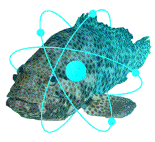About CHERNE
What is CHERNE?
CHERNE is an open European academic network for cooperation in Higher Education on Radiological and Nuclear Engineering
Goals of CHERNE
- - to share competencies and facilities in organising teaching activities for their students, mainly at the Master level
- to enhance the mutual support by learning from each other, by exchanging experiences and by regular mutual reflections
How the CHERNE network was born
|
2002
|
PAN Erasmus IP: “Practical Approach to Nuclear techniques” partners: ISIB (Belgium), CVUT (Czech Republic), UPV (Spain) |
|
2003
|
PAN-2 XIOS-HL (Belgium) & AcUAS (Germany) joined the group |
|
2004
|
PAN-3 with the same 5 partners of PAN-2 |
|
2005
|
Workshop in UPV, Valencia (creation of the CHERNE network)
|
|
2005
|
New partners:
|
|
2006
|
SPERANSA-1 Erasmus IP “Stimulation of Practical Expertise in Radiological And Nuclear SAfety“ participating the same 5 partners of PAN-2 and PAN-3. |
|
2006
|
2nd CHERNE workshop in UPV, Valencia |
|
2006
|
New partners:
|
Scope of CHERNE activities
- The CHERNE network is open to all activities related to higher education in nuclear or radiological engineering.
- The language of CHERNE activities is English.
- Each partner is expected to organise or co-organise at least one activity per year.
- CHERNE teaching activities are modules of at least 1 week/2ECTS open to the students of other partners.
- Attention is given...
- to include a strong practical part (experimental and/or computational),
- to minimise the costs for the students, and
- to involve the participation of young colleagues
Possible CHERNE activities
The following is a list (non-exhaustive) of possible CHERNE activities for 1-2 weeks, including practical part (experimental or computer)
- Introduction to the MonteCarlo method
- Probabilistic Safety Analysis
- Medical applications of radiations
- Radiation protection in non-conventional sectors
- Radiochemistry
- Reactor: practical course
- Applied plasma physics
- Reactor thermohydraulics
- Nuclear detectors
- Detector electronics
- Computational methods in safety analysis
- Material physics
- Accelerator use and applications
- Waste management
Some of these activities are already performed or are foreseen for the next future. Please, consult the Activities page where the list is normally updated.
